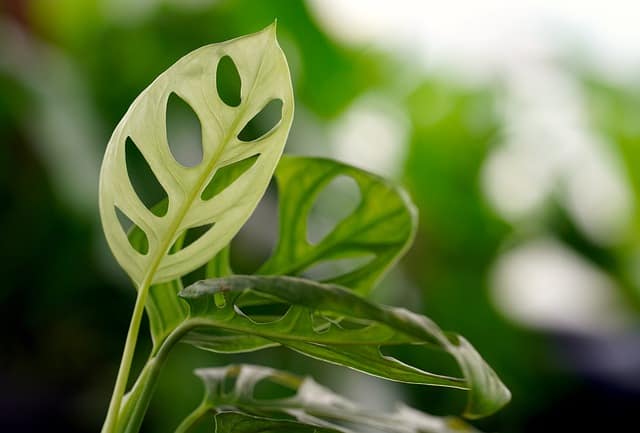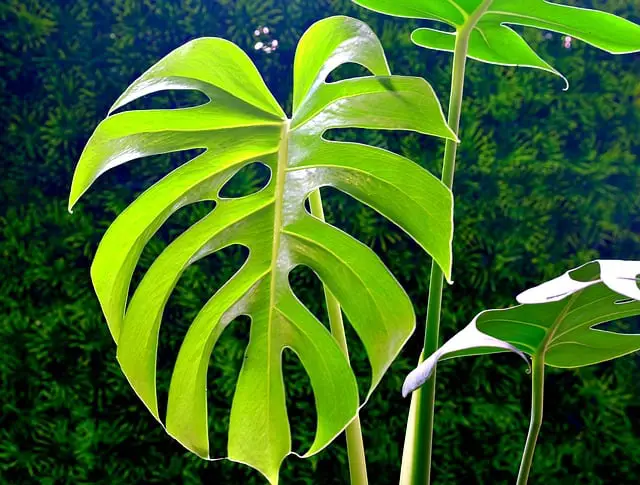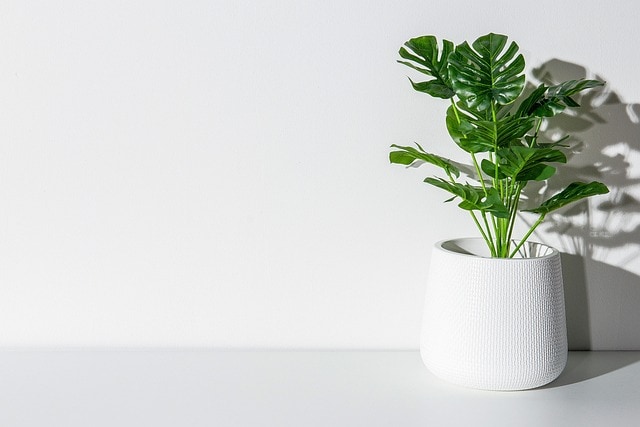Swiss cheese plants, also known as Monstera, are a popular houseplant due to their unique and attractive foliage. However, despite their popularity, these plants can be prone to problems, including dying. If you notice your Swiss cheese plant dying, it’s important to take action quickly to try and save it.
Understanding the signs of a dying Swiss cheese plant is the first step in addressing any problems. Some common signs include yellowing or browning leaves, wilting, and drooping.
These symptoms can be caused by a range of issues, including over or under-watering, lack of sunlight, or pest infestations. By identifying the cause of the problem, you can take the necessary steps to address it and help your plant recover.
Key Takeaways
- Understanding the signs of a dying Swiss cheese plant is crucial in addressing the issue.
- Common causes of Swiss cheese plant problems include over or under-watering, lack of sunlight, and pest infestations.
- Taking preventative measures, such as proper watering and pest control, can help keep your Swiss cheese plant healthy and thriving.
Related posts:
Understanding Swiss Cheese Plant

Swiss cheese plant, also known as Monstera Adansonii, is a popular indoor plant among plant enthusiasts. It is native to South America and belongs to the Araceae family. Swiss cheese plants are climbing vines and can grow up to 20 feet tall if given the proper support.
Indoor plant owners love Swiss cheese plants because of their lush green foliage and unique texture. They are easy to care for and can thrive in low to bright indirect light. Swiss cheese plants prefer to be kept in a warm and humid environment, which makes them an ideal addition to any interior living space.
To keep Swiss cheese plants healthy, it is important to provide them with proper support. They love to climb and can be easily kept in small spaces with the help of a stake or trellis. This will also help prevent the leaves from touching the ground, which can lead to insect infestations.
Swiss cheese plants prefer to be kept in shaded areas, away from direct sunlight. Direct sunlight can cause the leaves to burn and turn yellow. If the plant is placed in an area with too much light, it can also cause the leaves to wilt and droop.
Signs of a Dying Swiss Cheese Plant
Swiss cheese plants are popular houseplants known for their unique foliage and ease of care. However, like any other plant, they can fall victim to various issues that can cause them to die. It is important to recognize the signs of a dying Swiss cheese plant early on to take corrective actions and save the plant.
1. Wilting and Drooping Leaves
If the leaves of your Swiss cheese plant are wilting, drooping, or curling, it may be a sign of underwatering or overwatering. Overwatering can lead to root rot, which prevents the roots from absorbing water and nutrients. Underwatering, on the other hand, can cause the leaves to droop and curl as the plant tries to conserve water.
2. Yellowing and Browning Leaves

Yellow leaves are a common sign of a dying Swiss cheese plant. This can be caused by a range of issues, including overwatering, underwatering, inadequate light, or pest infestation. Brown or black spots on the leaves can also be a sign of leaf blight, a fungal disease that can quickly spread to other parts of the plant.
3. Mushy Stems
If the stems of your Swiss cheese plant feel mushy or soft, it may be a sign of overwatering or root rot. The plant may also be suffering from a pest infestation, such as mealybugs or spider mites, which can cause the stems to become weak and mushy.
Causes of Swiss Cheese Plant Problems
Swiss cheese plants are popular houseplants that are known for their unique foliage and easy-to-care nature. However, sometimes these plants may experience problems that can lead to their decline. Here are some of the common causes of Swiss cheese plant problems:
1. Improper Light
Swiss cheese plants require bright, indirect light to thrive. If they are exposed to direct sunlight, their leaves may become scorched and develop brown spots.
On the other hand, if they are kept in low light conditions, their growth may slow down, and their leaves may become pale and yellow. Therefore, it is essential to provide them with the right amount of light to keep them healthy.
2. Watering Issues
Swiss cheese plants are susceptible to both overwatering and underwatering. Overwatering can lead to root rot, which is a fungal disease that can cause the plant to wilt and die.
On the other hand, underwatering can cause the leaves to curl and turn brown. Therefore, it is crucial to water the plant correctly and provide it with adequate drainage.
3. Humidity Levels
Swiss cheese plants thrive in high humidity environments. If the humidity levels are too low, the leaves may become dry and brown. Therefore, it is essential to keep the plant in a humid environment or mist its leaves regularly.
4. Pests and Diseases

Swiss cheese plants are susceptible to pests such as spider mites, mealybugs, and scale insects. These pests can cause damage to the leaves and weaken the plant.
Additionally, fungal diseases such as root rot and leaf spot can also affect the plant’s health. Therefore, it is crucial to diagnose and treat any pest or disease problems promptly.
5. Potting Mix and Repotting
Swiss cheese plants require well-draining soil that is rich in nutrients. If the potting mix is too dense or does not provide proper drainage, it can lead to root rot.
Additionally, if the plant has outgrown its pot, it may need to be repotted into a larger container. Repotting can be stressful for the plant, so it is essential to do it correctly and at the right time.
Preventing Swiss Cheese Plant Problems
Swiss cheese plants are generally easy to care for, but they can develop problems if their needs are not met. To ensure a healthy plant, it’s important to take preventative measures to avoid issues such as foliage problems, wilt, and root-bound conditions.
One of the most important factors in keeping a Swiss cheese plant healthy is providing it with the right amount of water. Overwatering can lead to root rot, while underwatering can cause the plant to wilt and die.
It’s important to find a balance and ensure that the soil is moist but not waterlogged. A good rule of thumb is to water the plant when the top inch of soil feels dry to the touch.
Another key factor in preventing Swiss cheese plant problems is ensuring that the plant has adequate light. These plants thrive in bright, indirect light and can suffer if they are placed in a dark or poorly lit area. If the plant is not getting enough light, it may develop yellowing leaves or stop producing new growth.
Repotting a Swiss cheese plant can also help prevent problems. Over time, the plant may become root-bound, which can lead to stunted growth and other issues. Repotting the plant in fresh soil can provide it with the nutrients and space it needs to thrive.
When repotting, it’s also important to ensure that the plant has room for its aerial roots. These roots are an important part of the plant’s growth and development, and they should be allowed to grow freely. A larger pot can provide the plant with the space it needs to grow and thrive.
Propagating a Swiss cheese plant can also help prevent problems. By taking cuttings from a healthy plant and rooting them in fresh soil, you can create new plants that are free from any issues that may be affecting the original plant.
Regular misting can also help prevent problems with a Swiss cheese plant. These plants thrive in humid environments, and misting can help keep the foliage healthy and prevent issues such as dry, crispy leaves.
By taking preventative measures and staying vigilant for any signs of problems, it’s possible to keep a Swiss cheese plant healthy and thriving. If issues do arise, it’s important to diagnose the problem quickly and take steps to save the plant before it’s too late.
Treatment and Recovery

If a Swiss Cheese Plant is dying, there are certain steps that can be taken to try and revive it. The following are some treatments and recovery options that can be considered:
1. Repotting
If the plant is in a pot that is too small, it may be necessary to repot it. This can help to ensure that the plant has enough space to grow and thrive. When repotting, it is important to use a potting mix that is well-draining and to ensure that the plant is not overwatered.
2. Pruning
Pruning can help to remove any diseased or damaged leaves and can encourage new growth. When pruning, it is important to use clean, sharp tools to avoid damaging the plant. It is also important to avoid pruning too much, as this can cause stress to the plant.
3. Propagating
Propagating a Swiss Cheese Plant can help to create new plants and can also help to rejuvenate an old plant. Stem cuttings can be taken from the plant and rooted in water or soil. Once the cuttings have rooted, they can be transplanted into their own pots.
4. Transplanting
If the plant is in a pot that is too large, it may be necessary to transplant it into a smaller pot. This can help to ensure that the plant is not overwatered and that the soil does not become waterlogged.
5. Addressing Powdery Mildew
Powdery mildew can be a common problem for Swiss Cheese Plants. To address this issue, it is important to ensure that the plant is not overwatered and that there is good air circulation around the plant. If powdery mildew is present, it can be treated with a fungicide.
6. Addressing Older Leaves
If the plant is losing older leaves, this may be a natural part of the plant’s growth process. However, if the plant is losing too many leaves, it may be a sign of a problem. It is important to ensure that the plant is not overwatered and that there is good air circulation around the plant.
Frequently Asked Questions

How do I save a dying Swiss cheese plant?
To save a dying Swiss cheese plant, it’s important to determine the cause of the problem. Common reasons for a dying Swiss cheese plant include not enough light, too much direct light, not enough water, too much water, or a pest/insect invasion.
Once the problem has been identified, reverse the actions or situation that caused it. For example, if the plant is not getting enough light, move it to a brighter location, or if it’s getting too much direct light, move it to a shadier spot.
Why is my Swiss monstera dying?
Swiss monstera may die due to inadequate light, water, or humidity levels. Make sure that the plant is receiving enough light, water, and humidity to keep it healthy. Additionally, check for any signs of pests or insect infestation, which can also cause the plant to die.
Why is my Swiss cheese plant Browning?
Swiss cheese plant leaves may turn brown due to overwatering, underwatering, or exposure to direct sunlight. If the plant is overwatered, reduce the frequency of watering and allow the soil to dry out before watering again.
If the plant is underwatered, increase the frequency of watering and make sure that the soil is moist but not waterlogged. If the plant is exposed to direct sunlight, move it to a shadier spot.
What does a dehydrated monstera look like?
A dehydrated Swiss cheese plant may have wilted leaves that are dry and crispy to the touch. The leaves may also turn yellow or brown and fall off the plant. To revive a dehydrated Swiss cheese plant, water it thoroughly and mist it regularly to increase humidity levels.
Why are the leaves on my Swiss cheese plant turning yellow?
Swiss cheese plant leaves may turn yellow due to overwatering, underwatering, or exposure to direct sunlight. If the plant is overwatered, reduce the frequency of watering and allow the soil to dry out before watering again.
If the plant is underwatered, increase the frequency of watering and make sure that the soil is moist but not waterlogged. If the plant is exposed to direct sunlight, move it to a shadier spot.
How long does it take for a Swiss cheese plant to die after repotting?
Swiss cheese plants may take up to a week to recover from repotting. During this time, it’s important to keep the plant in a shaded area and water it regularly.
If the plant is not showing signs of recovery after a week, it may be dying due to other factors such as inadequate light, water, or humidity levels.

Hey, I’m Lisa and I’ve been an avid gardener for over 30 years. I love writing, talking and living in the garden! Feel free to connect with me on my socials below


